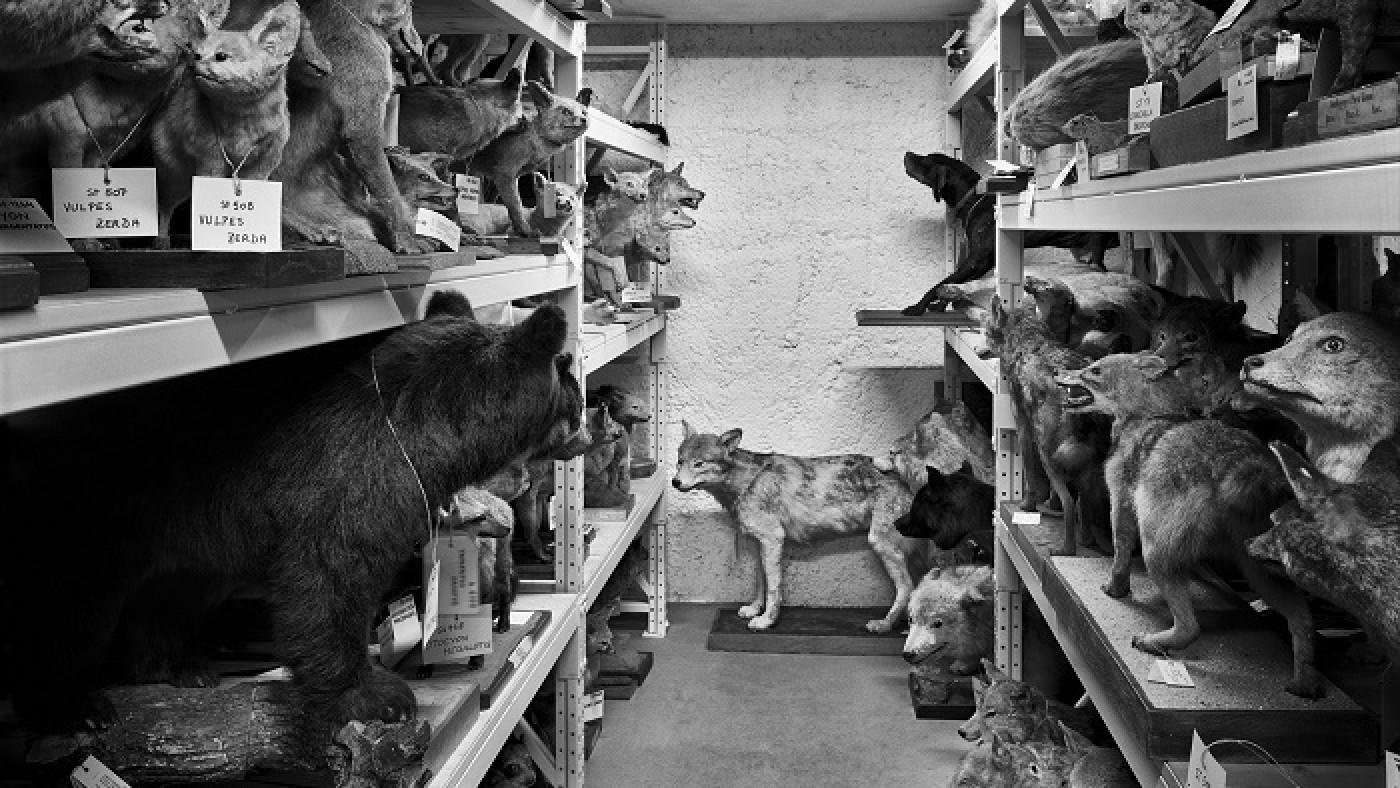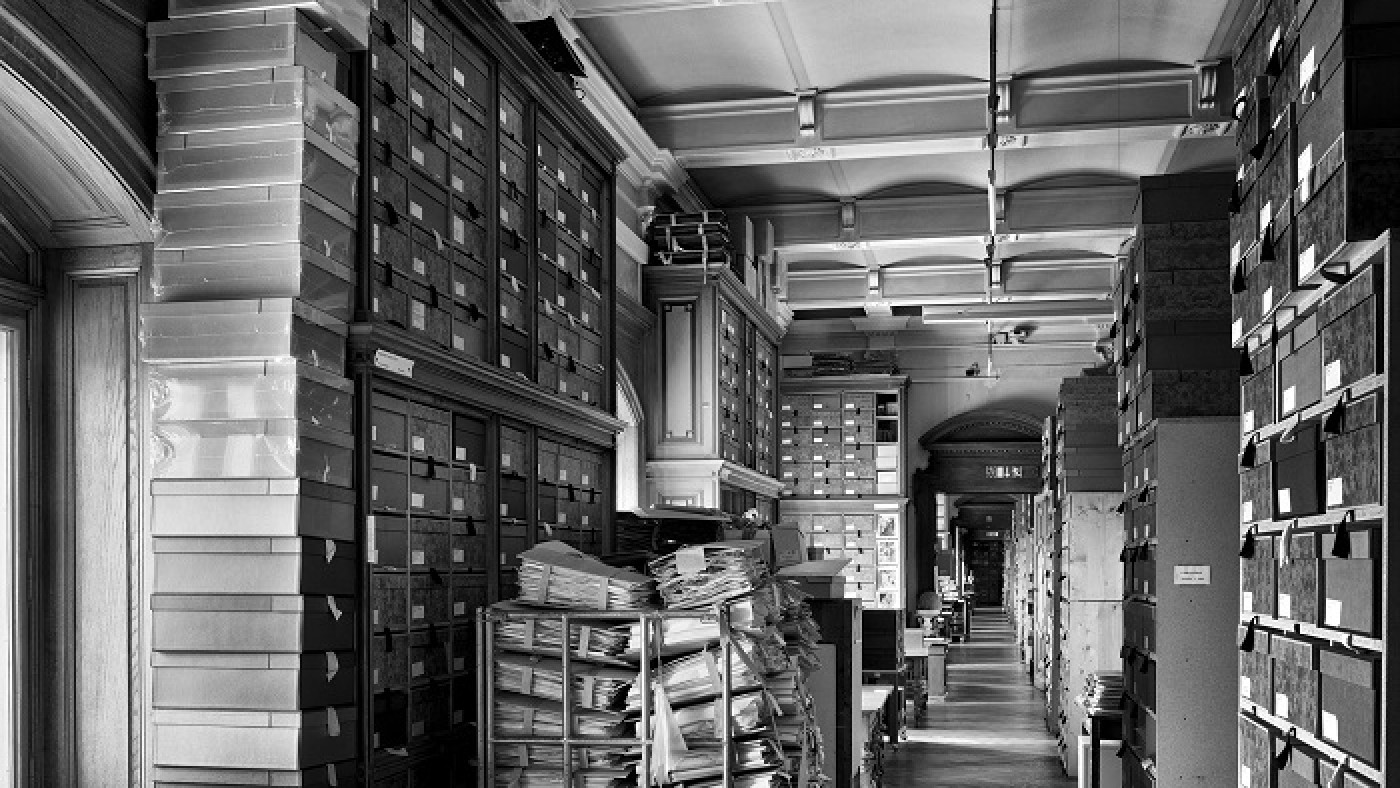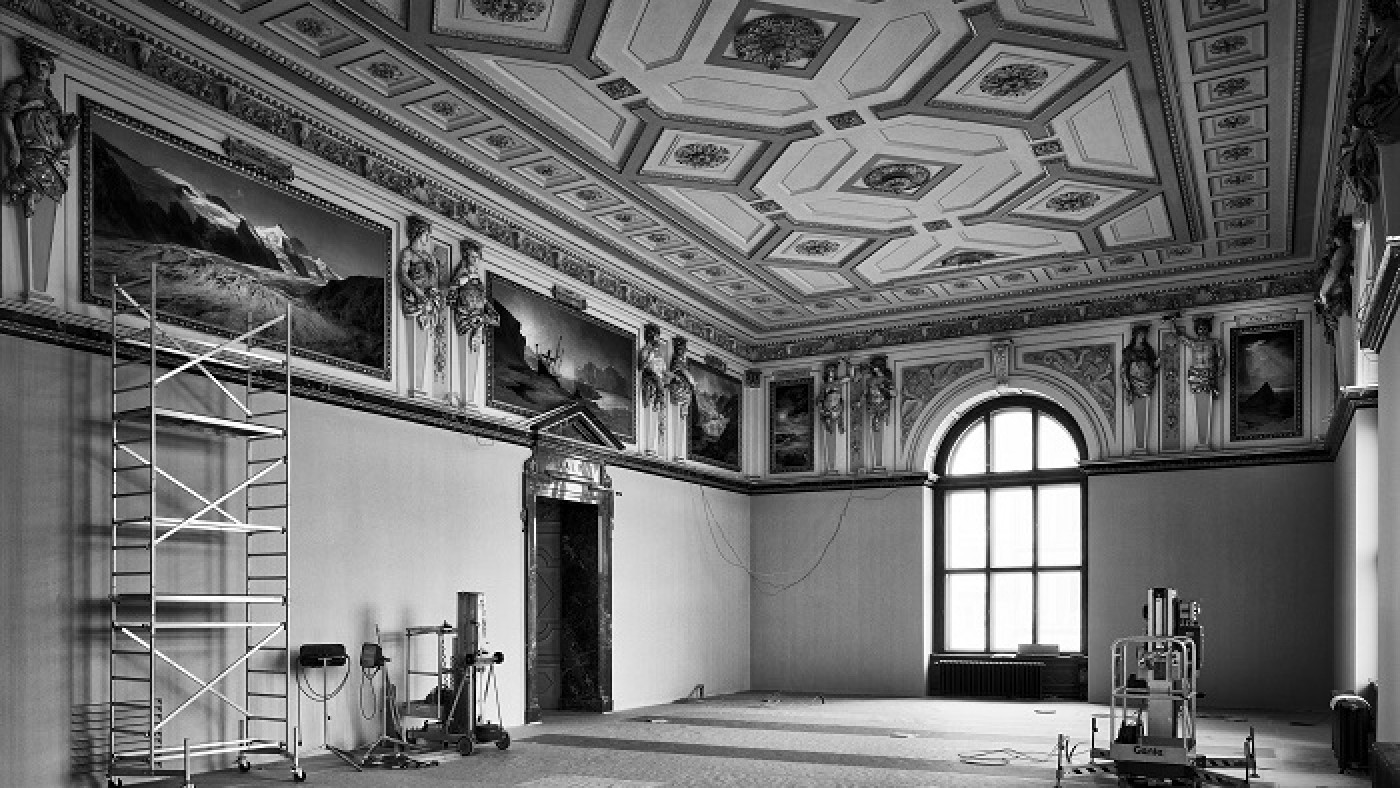INSIDES
Behind the scenes of the Natural History Museum Vienna | Photographic insights by Stefan Oláh
from 13. September 2023
Special exhibition in hall 21
For centuries,
museums have floated the idea of uniting many time levels in one place by collecting a wide variety of things and relics.
The anthropologist Marc Augé (1994) refers to such "spaces of all times" as "non-places". Places are usually characterized
by identity and temporality. A non-place, on the other hand, does not have a clear temporal identity. Rather, relationships
are constantly being reconstituted in it. Photographer Stefan Oláh depicts such relationships in his new series of images
from 2022 and 2023. He takes us to non-places in the Natural History Museum Vienna.
It is Oláh's first series of photographs to be held exclusively in black and white. Color photos reveal more about the time of shooting, while black-and-white photography makes it difficult to orient yourself in time. Equipment elements relating to building services, lighting and electrical installations or warehouse furniture are time-bound. However, when it comes to motifs that show only historical inventory, Oláh breathes a trace of eternity into the timeless "space of all times".
He does not do this without a wink. From his many years of involvement with the backstage area of museums, he knows all too well the constant effort to collect, organize, explore, conserve and manage the big world on a small scale – an endless battle against windmills in the sense of a collective memory. Oláh translates the lance of the many Don Quixotes in our museums into appreciative irony. He never intervenes, he does not stage. He only observes precisely. He then exposes the image captured on his large-format camera on analogue film material.
However, Stefan Oláh's images of relationships also create unease: he portrays the finiteness of lifetime by documenting the attempt to overcome it in the museum space. He gathers a silent conference of animals in the form of taxidermy specimens of gorillas, zebras, manatees, buffaloes, red deer, and others. Pale fish bodies are peeking out of eternal glass coffins, prancing upright on their caudal fins. Fear of death during the Second World War is commemorated by the surviving inscription "Keep calm // No smoking" on the walls in the basement of the museum. The human skull collection becomes a cemetery of the unburied. And the paintings in Hall 6 remind us of colonial land grabs by the Habsburgs as well as of the dimensions of the Pasterze long before global warming and glacier meltdown.
Text: Martina Griesser-Stermscheg
Stefan Oláh (born 1971 in Vienna) studied photography in Munich. He lives and works in Vienna and Upper Austria. One focus of his artistic work is designing and photographing image series for a wide variety of art institutions as well as cultural and scientific institutions. Besides, he concentrates on the depiction of different architectural, living, and cultural spaces.
He has published the outcomes of his extensive photographic projects in numerous illustrated books such as "Museumsdepots – Inside the Museum Storage" (2014) or "Bunt, sozial, brutal. Architektur der 1970er Jahre in Österreich" (2019). His works are displayed in exhibitions, galleries, museums, and private collections.
It is Oláh's first series of photographs to be held exclusively in black and white. Color photos reveal more about the time of shooting, while black-and-white photography makes it difficult to orient yourself in time. Equipment elements relating to building services, lighting and electrical installations or warehouse furniture are time-bound. However, when it comes to motifs that show only historical inventory, Oláh breathes a trace of eternity into the timeless "space of all times".
He does not do this without a wink. From his many years of involvement with the backstage area of museums, he knows all too well the constant effort to collect, organize, explore, conserve and manage the big world on a small scale – an endless battle against windmills in the sense of a collective memory. Oláh translates the lance of the many Don Quixotes in our museums into appreciative irony. He never intervenes, he does not stage. He only observes precisely. He then exposes the image captured on his large-format camera on analogue film material.
However, Stefan Oláh's images of relationships also create unease: he portrays the finiteness of lifetime by documenting the attempt to overcome it in the museum space. He gathers a silent conference of animals in the form of taxidermy specimens of gorillas, zebras, manatees, buffaloes, red deer, and others. Pale fish bodies are peeking out of eternal glass coffins, prancing upright on their caudal fins. Fear of death during the Second World War is commemorated by the surviving inscription "Keep calm // No smoking" on the walls in the basement of the museum. The human skull collection becomes a cemetery of the unburied. And the paintings in Hall 6 remind us of colonial land grabs by the Habsburgs as well as of the dimensions of the Pasterze long before global warming and glacier meltdown.
Text: Martina Griesser-Stermscheg
Stefan Oláh (born 1971 in Vienna) studied photography in Munich. He lives and works in Vienna and Upper Austria. One focus of his artistic work is designing and photographing image series for a wide variety of art institutions as well as cultural and scientific institutions. Besides, he concentrates on the depiction of different architectural, living, and cultural spaces.
He has published the outcomes of his extensive photographic projects in numerous illustrated books such as "Museumsdepots – Inside the Museum Storage" (2014) or "Bunt, sozial, brutal. Architektur der 1970er Jahre in Österreich" (2019). His works are displayed in exhibitions, galleries, museums, and private collections.





